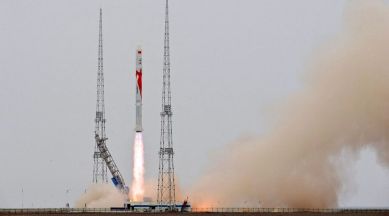Space Mining: The Untapped Goldmine Beyond Earth’s Orbit- Humanity has always been driven by exploration — from the dawn of civilization, crossing oceans and continents, to venturing into the skies and beyond. Now, as our technology advances, the next great frontier is not just space exploration but the unlocking of space’s vast, untapped wealth. Space mining represents one of the most transformative opportunities in human history, promising to revolutionize our economy, industry, and even the sustainability of our planet.
The Limitless Frontier of Resources
Space is unimaginably vast, filled with celestial bodies containing mineral and elemental resources far surpassing anything found on Earth. Asteroids, comets, and the Moon harbor rich deposits of precious metals like platinum, gold, and rare earth elements, as well as abundant amounts of water ice and volatile compounds critical for sustaining long-term space missions.
Unlike Earth, where resources are finite and extraction becomes increasingly challenging and environmentally taxing, space offers nearly limitless supplies. For example, some asteroids are composed of metals more concentrated than terrestrial ores, offering an efficiency of extraction that could drastically lower the cost of raw materials for manufacturing and technology.
Why Space Mining Matters
As global demand for resources grows, Earth’s ecosystems are under unprecedented strain. Traditional mining has left scars on the environment and led to geopolitical conflicts over scarce minerals essential for electronics, renewable energy, and advanced technologies. Space mining presents a revolutionary alternative — providing resources without depleting Earth’s fragile environment and potentially easing geopolitical tensions by opening access to new supply chains in space.
Furthermore, resources harvested in space can support further space exploration and colonization. Water mined from asteroids or the Moon can be split into hydrogen and oxygen to produce rocket fuel, effectively turning these bodies into refueling stations. This capability can significantly reduce the costs and risks of missions to Mars, the outer planets, or deep-space habitats, enabling humanity’s permanent presence beyond Earth.
Technological and Economic Challenges
Despite the promise, space mining remains a monumental challenge. It requires advances in robotics, autonomous mining, in-situ resource processing, and space logistics. The harsh conditions of microgravity, vacuum, and radiation pose engineering hurdles. However, private companies and governments alike are investing heavily in overcoming these challenges. Recent missions to near-Earth asteroids and lunar explorations demonstrate growing capabilities and knowledge.
Economically, space mining will need to prove it can deliver materials at competitive prices. Initially, focusing on high-value, low-mass elements like platinum group metals or using water as fuel may drive early profitability. As technology matures, broader mining and manufacturing ecosystems in space could emerge, turning the vision of a space-based economy into reality.
Space Mining: Key Targets and Resources
1. The Moon
-
Water Ice: Detected in permanently shadowed craters near the lunar poles, useful for life support and fuel production.
Source: NASA, USGS Lunar Resource Assessment. -
Helium-3: A rare isotope on the Moon’s surface with potential use in future fusion energy.
Referenced in various NASA studies and fusion research. -
Regolith Minerals: Lunar soil contains ilmenite and other minerals that can be processed into oxygen and metals.
Supported by NASA Artemis mission objectives.
2. Near-Earth Asteroids (NEAs)
-
Precious Metals: Many NEAs are rich in platinum, gold, nickel, and cobalt—valuable for industrial and technological use.
Highlighted by NASA’s OSIRIS-REx mission to asteroid Bennu. -
Water and Volatiles: Some asteroids contain water and gases, essential for in-space refueling and life support.
Noted in NASA’s asteroid exploration and analog testing reports. -
Low Gravity Mining: Mining on asteroids is technically feasible due to their small size and weak gravity, reducing energy costs.
3. Mars
-
Subsurface Ice: Water ice has been detected under the Martian surface, especially near the poles. Vital for sustaining human life and producing fuel.
Confirmed by NASA orbiters and rovers. -
Metallic Minerals: Martian soil includes iron-rich compounds like hematite and magnetite, useful for construction and manufacturing.
Data from NASA’s Mars rovers. -
Atmospheric Carbon Dioxide: Mars’ CO₂-rich atmosphere can be converted into oxygen and methane fuel.
Demonstrated by the MOXIE experiment on the Perseverance rover.
4. Ceres and Other Celestial Bodies
-
Ceres: Believed to contain water ice and other volatiles, making it a long-term candidate for mining.
Explored by NASA’s Dawn mission. -
Moons of Jupiter (e.g., Europa, Ganymede): Suspected to hold subsurface oceans and exotic materials, though challenging to access.
Why Space Mining Matters
-
Resource Sustainability: Provides alternatives to Earth’s finite and environmentally taxing mining practices.
-
Support for Space Missions: Enables fuel production and life support directly in space, reducing dependency on Earth launches.
-
Economic Expansion: Opens up new industries, markets, and technological innovations.
A New Era of Infinite Possibility
The promise of space mining isn’t just about wealth — it’s about ensuring humanity’s long-term survival and growth. By tapping into the abundant resources beyond Earth, we can build sustainable colonies, develop new industries, and inspire generations to come. The infinite expanse of space holds resources that could fuel a future where scarcity is replaced by abundance, and exploration leads to prosperity on a scale previously unimaginable.
In essence, space mining is the gateway to unlocking humanity’s potential on a cosmic scale — a goldmine not just of materials, but of opportunity, innovation, and hope for a thriving civilization beyond our home planet.
How Did Extended Space Travel Impact These Astronauts Physically and Mentally? | Maya




